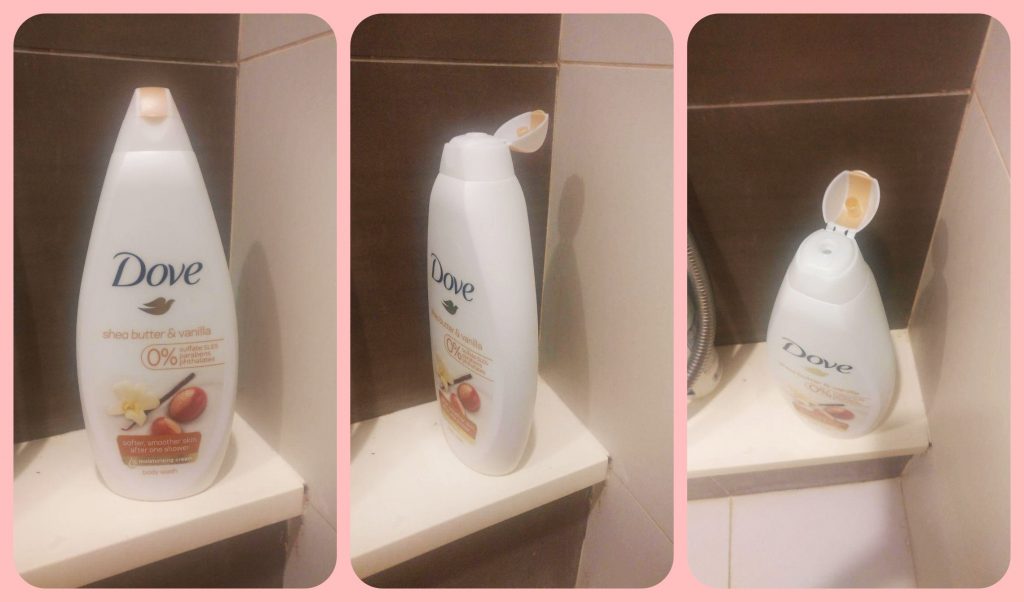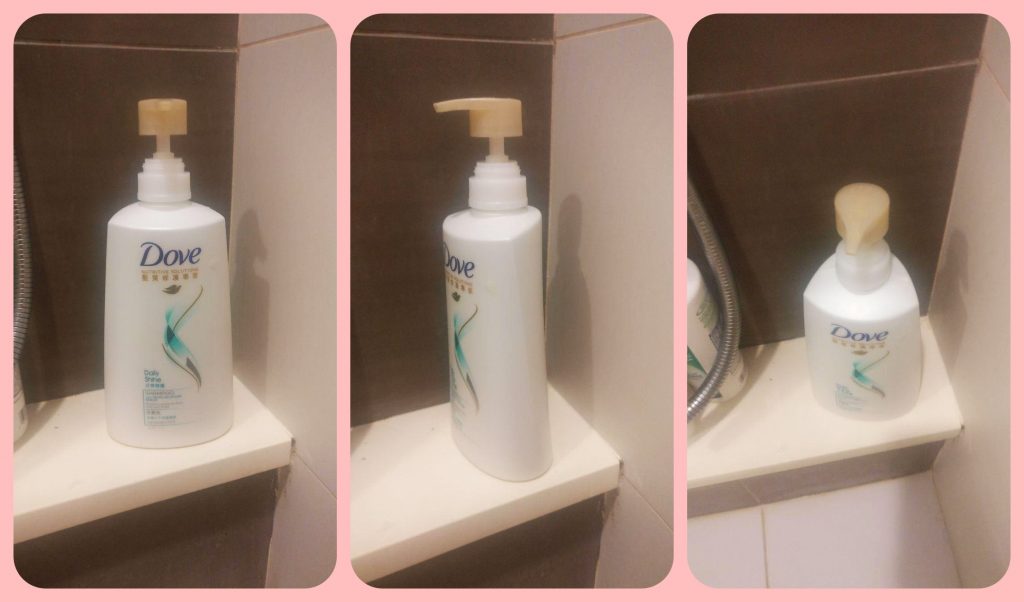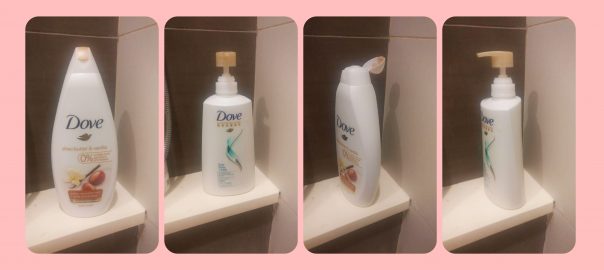Choose two objects that you use every day (you cannot pick mobile phones or laptop/computer) and analyze their design using the principles described in Chapter 1 of The Design of Everyday Things. Imagine describing what the object is and what it’s designed to do to someone who has never seen it before. Is it intuitive or frustrating?
The two objects I’ve chosen are body wash and shampoo. In general, both are bottle yet both have different basic operation on how it works to dispense its content.
Body Wash: Dove Shea Butter & Vanilla Shower Foam

The body wash bottle has a tear drop shape that is quite big in volume and dimension. It has difference affordances like it can afford to be opened, refilled and lifted. With the cap covering the top, it can afford to be opened. With the slim thickness of the bottle, it can afford to be lifted easily by one hand and turned around for the content to be poured out to the user’s other hand. Also, as the cap can be opened, the bottle afford to be refilled.
As for the signifiers, the yellow-gold colour at the cap (while the rest are white) as well as the small extrusion at the cap help to indicate that it can be opened by pulling it up. At the same time, the line between the bottle cap and body helps to indicate that they can be separated and that the bottle can be refilled.
Naturally, the position of the vertical hole at the top helps to direct that it needs to be flipped over to get the liquid out. Once it happens, the feedback will immediately happen as the body wash pours, there is no need to press the bottle sides as the hole size is already quite big.
For someone who has never seen it before, the design is quite intuitive and the concept is straight-forward for a bottle. I really feel that despite the big volume size, it can easily be lifted by one hand even by a relatively small hand of mine.
Shampoo: Dove Daily Shine Shampoo

The shampoo has a round shape with a pump to dispense when pressed, it is bigger in volume compared to the body wash and big dimension (similar height). With its mechanism the shampoo bottle can afford to be pressed to dispense its content. It can also afford to be refilled. However, because of the diameter size of the bottle and heavy content, it cannot really afford to be lifted by one hand while showering (even if it is lifted, the other hand will be pressing the pump, hence the palm cannot really be free to hold the shampoo effectively).
For the signifier, the yellow-gold colour of the pump (while the rest are whit) is a different part that attracts attention, indicating it can be pressed. Also, the vertical lines along the bottle neck also indicate that it can be opened by twisting it in anti-clockwise direction if the user wants to refill the bottle.
Naturally, the shape of the end of the pump which is a horizontal hole also indicate that the shampoo will pour out at that side and thus there is no need to lift and turn the bottle around. Once pressed, the feedback will immediately happen as shampoo pours out, unless it is running out.
For someone who has never seen it before, the design is considered intuitive and direct for a bottle. It just, at the very first the pump will be locked and it might get confusing if the new user is not familiar with such concept to turn it anti-clockwise to unlock.
Summary
Analysing both bottles, I realise that despite their same function to store liquid and make it dispensable, their different design details lead to different concept of utilising it. While one is meant to be lifted and turned around to dispense, the other one is not meant to be lifted and only pressed the pump to dispense. If someone never know any such bottles before, the body wash bottle may be more intuitive for him as there is no additional ‘technology’ (the pump) required in the process and with the basic sense of gravity, he can instinctively turn it around to get the content out.


